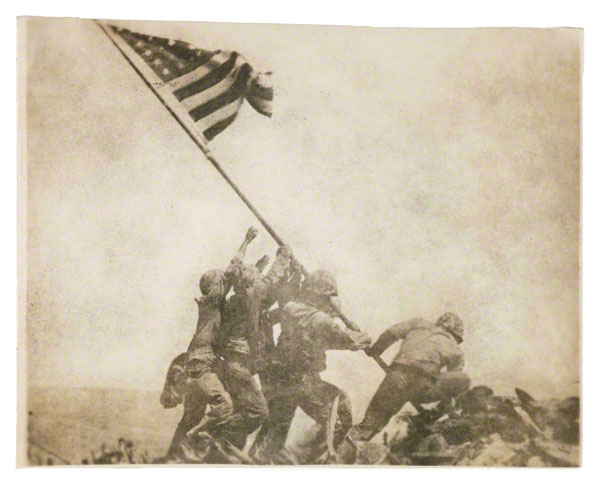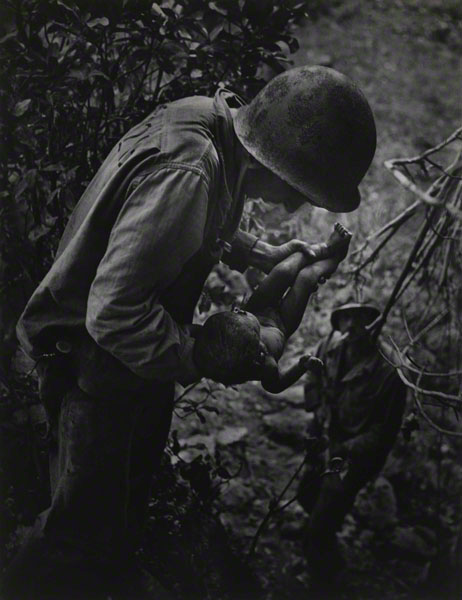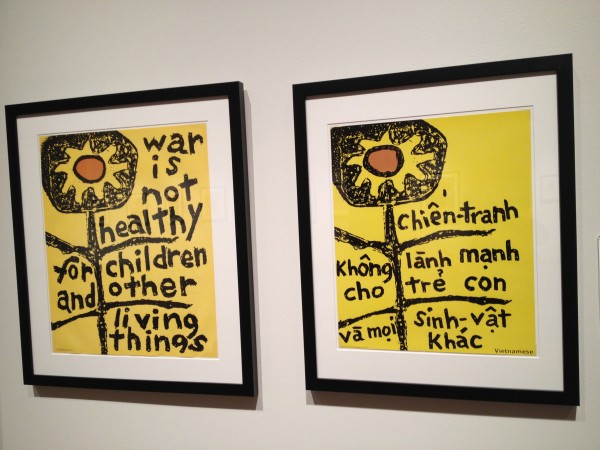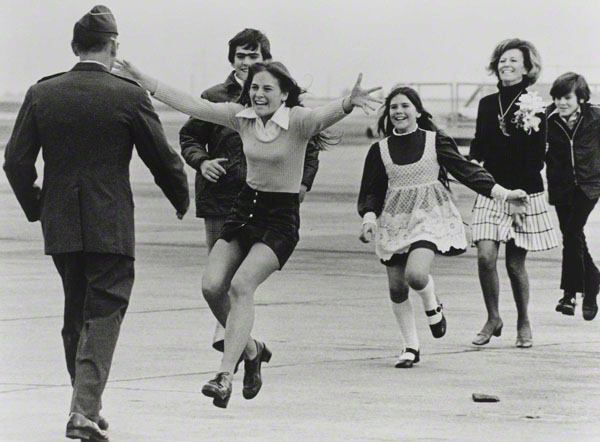In the past year I saw an original war protest poster that looked like this:
If you asked your kids tonight if war was good or bad it would be like one of those AT&T ads where the market research guy asks a bunch of kids if “Bigger is better?” Of course, Big is better and War is bad. We all know that and yet we are still fighting wars on several continents around the world. To listen to combat photographers at the Annenberg Space for Photography’s War/Photography show was to hear from the absolute front lines just how terrifyingly awful war is. And, to wonder why we aren’t doing more about it. Or about the men and women who come home, forever changed.
And it’s always been terrible. Back when this image became famous, everyone had “skin in the game” – they had a brother or cousin who was fighting in the Pacific or a neighbor who had just come home from duty – so, Joe Rosenthal’s photo Old Glory immediately came to represent the emotional support that all Americans had for our soldiers in battle.
One solder-turned-photographer in attendance today, who got very emotional recounting a story about losing a friend in battle, informed us that we are now losing more soldiers to suicide and PTSD than we are to bullets on the battlefields. Coming home isn’t what it used to be, or at least what we thought it would be as promised by this Viet Nam era image by Sal Veder.
I grew up paging through The Family of Man, which included many lyrical W. Eugene Smith images. This one called ‘Infant” is a delicate statement about the contrast between child and man, foreigner and native, peace and war. Growing up on a diet of strong anti-war images made me sure that “war is not good for children or other living things”. And yet, what have I done in protest? It all feels so big, and out of my control. Yet the brave photographers whose work is displayed in this powerful show picked up their cameras and packed into war zones to try and make a difference.
If you venture to this show, take the time to watch a powerful half-hour documentary film about several of the photographers whose work is in the show. I was fascinated by Carolyn Cole, who took her camera into war zones around the world after witnessing 9/11 firsthand. (She now works for the Los Angeles Times and won a Pulitzer for her photographs of the conflict in Kenya). There was Joao Silva, a photojournalist caught in the crossfire during the last days of apartheid, who passionately mourns the loss of friends that day, despite the fact that he lost his legs stepping on a land mind in 2010 and has had over 47 operations to fix his internal organs.
This breed of photographer believes that his or her efforts to bear witness to acts of war are vital. One woman put it this way: “What needs to be shown is something they don’t want us to see”. By “they”, the photographer was referring to shots of dead soldiers and body bags, that by now we understand were censored by the Pentagon for years. But, the images that I most did not want to see were those by Australian photographer Ashley Gilbertson. Gilbertson’s Bedrooms of the Fallen show the empty bedrooms of soldier who did not come home, and reminds us poignantly not to forget. Click here to remember these Americans.
Warning: the show contains many dramatically more graphic images than are presented here on the site. This show is not for the faint of heart, or for teens who aren’t prepared for the violence, death and, frankly, the sadness.
WAR/PHOTOGRAPHY: Images of Armed Conflict and Its Aftermath will open at the Annenberg Space for Photography on March 23, 2013 and run through June 2, 2013. This exhibition has been organized by The Museum of Fine Arts, Houston. All the images pictured here are on view at the show, and are included in a gorgeous volume of photographs that have been compiled along with the exhibit.



